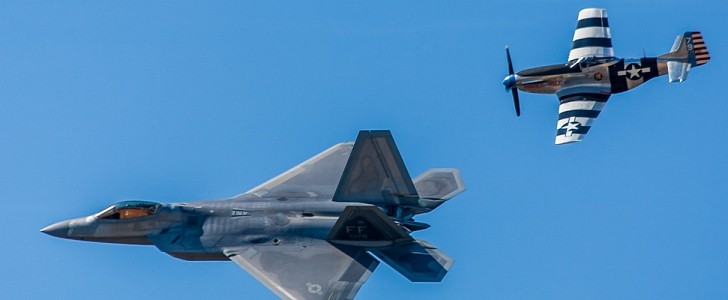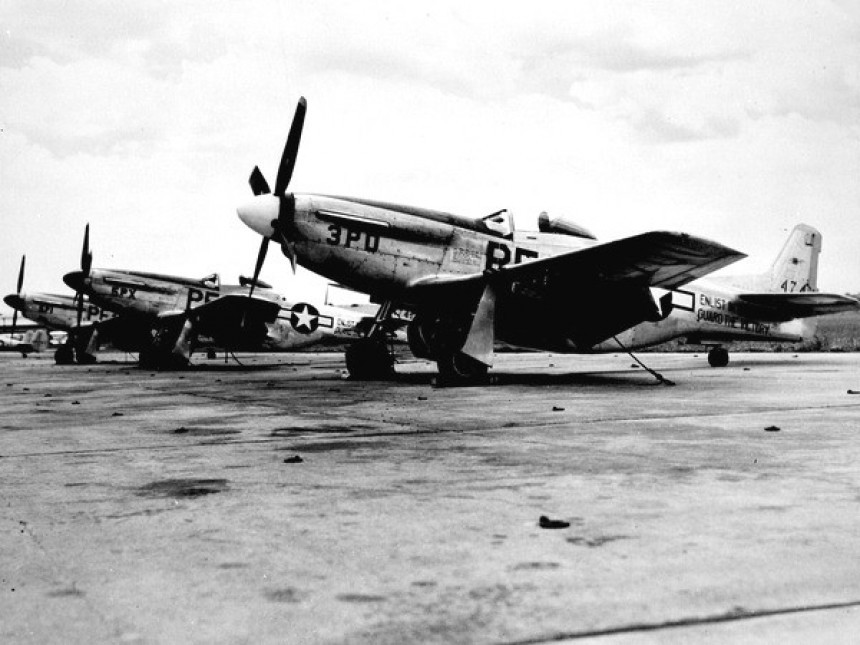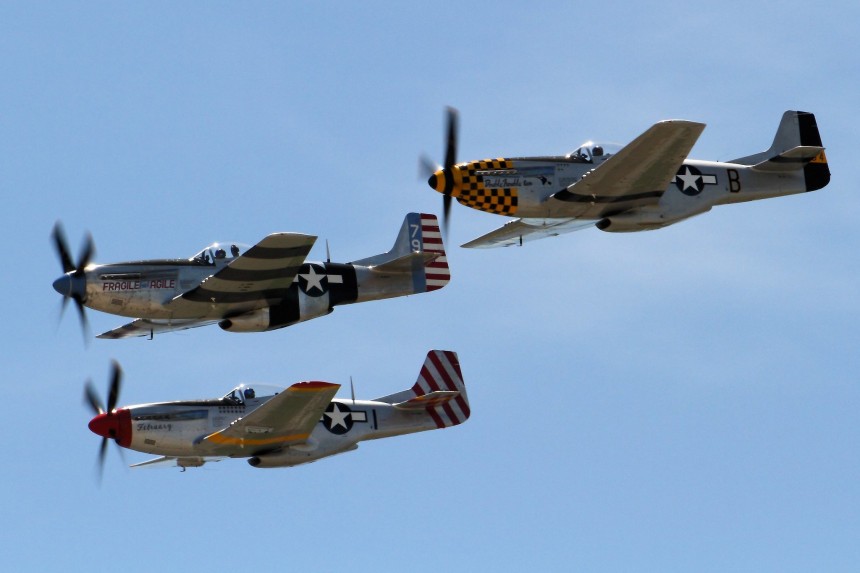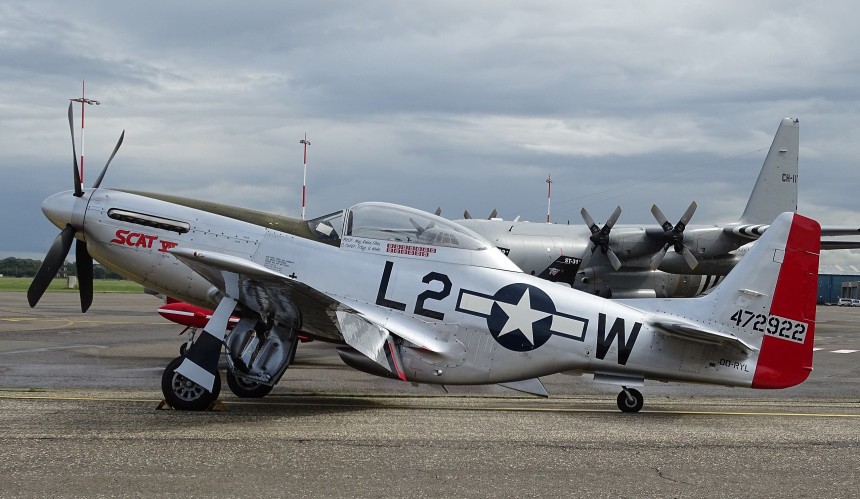With a kill ratio of 19 to 1, the NA P51 Mustang was one of the most-effective warbirds in WWII, cleared Europe's sky, and paved the path for the V-Day in 1945. This is the story of one of the most famous American aircraft ever made.
Despite having an order placed for the Supermarine Spitfire, the British government tried to get more airplanes from the U.S. They knew that to defend themselves against the German war machine, they would need more of everything, including fighter planes. Thus, in 1938, a few representatives came across the Atlantic and asked for the P40 Curtiss warbird. But things went sideways as the Curtis-Wright manufacturer was already burdened with orders from U.S. Air Force. So, in a desperate move, the British government contacted North American Aviation to develop a warbird for them. The answer was yes, but time was ticking, and by the time they signed the contract, it was already March 1940. Furthermore, Poland was already occupied, and France and the UK had already declared war on Nazi Germany since September 3rd, 1939.
When work started on the P51, NAA assigned James Howard "Dutch" Kindelberger to design the airplane. He considered the 1,000 hp Allison V-1710 powerplant. That turbocharged V12 already proved its value in various tests. Just 102 days after the British government signed the deal with the American plane maker, the P51's prototype, named NA-73X, began its ground tests. On October 26th, 1940, it took off for the first time, five days before Germany ended its Battle of Britain campaign. Its airframe was excellent, and the Brits thought that they had a winner. But as the plane climbed higher into the sky, its performance dropped rapidly.
The UK air industry already proved its worth during the Battle of Britain when the Hawker Hurricane and Supermarine Spitfire successfully defended the island against waves of bombers and fighters. Still, the war was just at the beginning. In April 1942, the first batch of P51s entered service in the RAF. Thanks to its drop-tanks, the aircraft had a 1,375 mile (2,200 km) range, but it was still vulnerable in front of the ME-109 and the FW-190, especially at higher altitudes. Moreover, the Allison V-1710 lacked in terms of performance above 15,000 feet (4,600 meters).
Then, the miracle happened! A team of RAF engineers replaced the American powerplant with a supercharged Rolls-Royce Merlin unit similar to those installed in the Supermarine Spitfire. That change made a huge difference in performance, especially above 20,000 feet (6,000 meters), where the ME-109 started to lose its steam. Since the Luftwaffe (German Air Force) had way fewer FW-190 fighters, which were very efficient at that flight level, the P51 started to rule the European sky as a long-range fighter.
But things went even better. American engine manufacturer Packard already built the Rolls-Royce Merlin engine in the U.S. Thanks to several improvements, the American version of the British V12 RR powerplant provided 1,400 hp. This version transformed the P51 into the hero of the sky for the Allied armies. Fitted with the new powerplant, the aircraft could fly up to 437 mph (703 kph) and reach an operating ceiling of almost 42,000 feet (12,800 meters). That was above the level where the ME-109 was superior. This was the 1943 P51D variant, the best of them all.
The P51 served for two purposes: fighter and fighter-bomber. Its main mission was to protect the Allied B-17 bombers, which were sitting ducks for the FW-190s and the ME-109s. During 1943's bombing campaign over the oil refineries from Eastern Europe, operation Tidal Wave, the American fleet climbed above the 10,000-meter ceiling to completely avoid the Bulgarian aircraft, which tried to block them from reaching their targets.
This Packard-powered version, also known as the P51D, came fitted with six 12.7 mm machine guns installed on the wings. NAA also installed four hardpoints for 500 lbs (230 kg) bombs or rocket launchers under the wings. The firepower, maneuverability, and speed were soon recognized and feared by the Axis pilots. The aircraft was 32.2 and ¼ feet long, 37 ft wingspan, and 13'8" tall. In addition, its laminar design reduced the turbulent airflow across the wings, which helped with the speed and range. It was also credited for shooting down the fastest WWII aircraft, the jet-engined ME-262.
After WWII, the aircraft remained in service even in the Korean War before being eventually replaced by the jet-fighters. Still, it was not only fast but highly maneuverable, and that was an important asset, even when it had to fight against the Russian-built MIG-15 flown by the Chinese "volunteer" pilots. NAA built more than 15,000 units of this famous aircraft and, nowadays, there are almost 200 P51s still in running order worldwide, and 150 of these are in the U.S., either privately owned or in Museums. Tom Cruise is one proud owner of a P51D warbird, and he knows how to fly it.
When work started on the P51, NAA assigned James Howard "Dutch" Kindelberger to design the airplane. He considered the 1,000 hp Allison V-1710 powerplant. That turbocharged V12 already proved its value in various tests. Just 102 days after the British government signed the deal with the American plane maker, the P51's prototype, named NA-73X, began its ground tests. On October 26th, 1940, it took off for the first time, five days before Germany ended its Battle of Britain campaign. Its airframe was excellent, and the Brits thought that they had a winner. But as the plane climbed higher into the sky, its performance dropped rapidly.
The UK air industry already proved its worth during the Battle of Britain when the Hawker Hurricane and Supermarine Spitfire successfully defended the island against waves of bombers and fighters. Still, the war was just at the beginning. In April 1942, the first batch of P51s entered service in the RAF. Thanks to its drop-tanks, the aircraft had a 1,375 mile (2,200 km) range, but it was still vulnerable in front of the ME-109 and the FW-190, especially at higher altitudes. Moreover, the Allison V-1710 lacked in terms of performance above 15,000 feet (4,600 meters).
But things went even better. American engine manufacturer Packard already built the Rolls-Royce Merlin engine in the U.S. Thanks to several improvements, the American version of the British V12 RR powerplant provided 1,400 hp. This version transformed the P51 into the hero of the sky for the Allied armies. Fitted with the new powerplant, the aircraft could fly up to 437 mph (703 kph) and reach an operating ceiling of almost 42,000 feet (12,800 meters). That was above the level where the ME-109 was superior. This was the 1943 P51D variant, the best of them all.
This Packard-powered version, also known as the P51D, came fitted with six 12.7 mm machine guns installed on the wings. NAA also installed four hardpoints for 500 lbs (230 kg) bombs or rocket launchers under the wings. The firepower, maneuverability, and speed were soon recognized and feared by the Axis pilots. The aircraft was 32.2 and ¼ feet long, 37 ft wingspan, and 13'8" tall. In addition, its laminar design reduced the turbulent airflow across the wings, which helped with the speed and range. It was also credited for shooting down the fastest WWII aircraft, the jet-engined ME-262.















